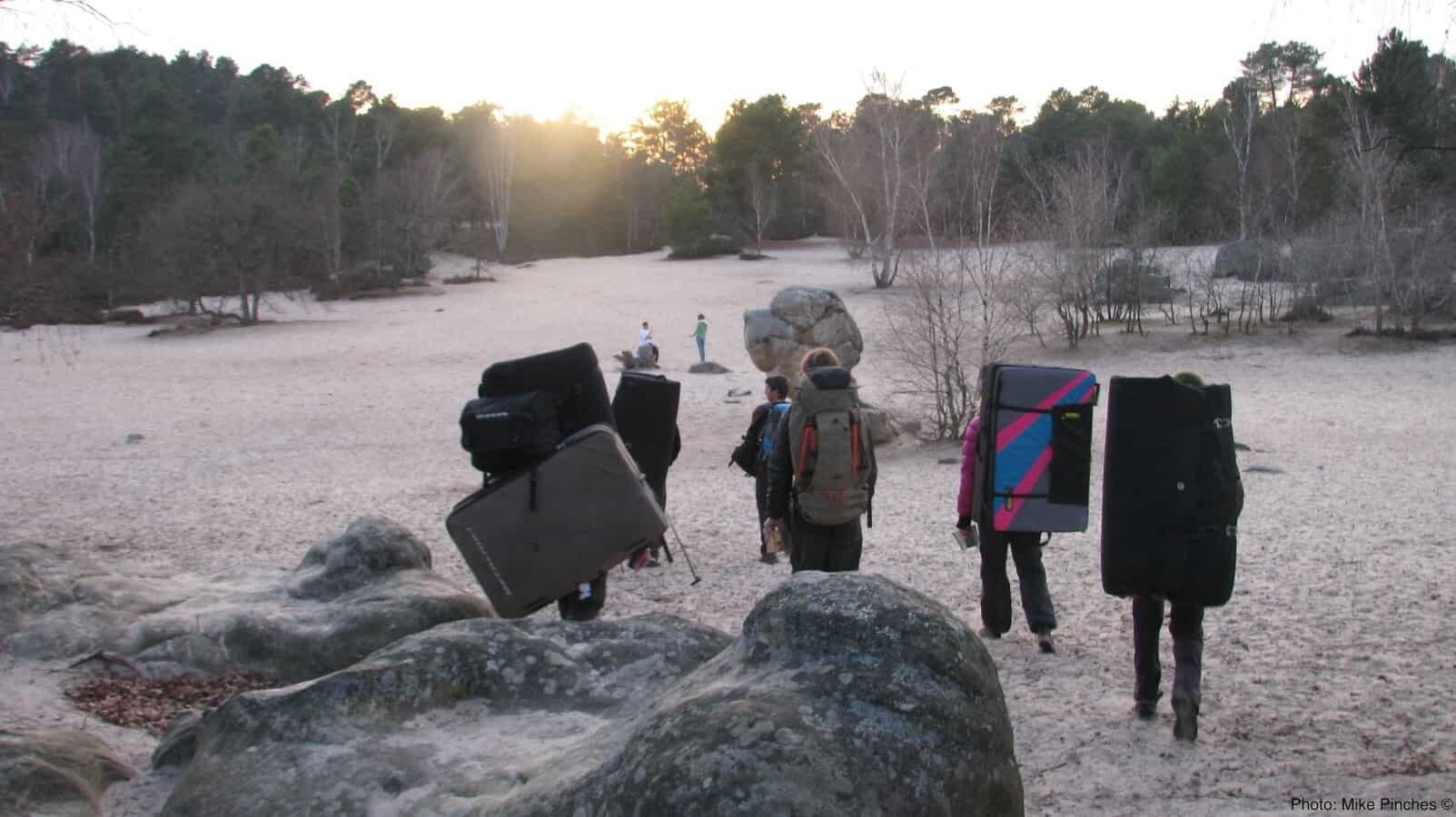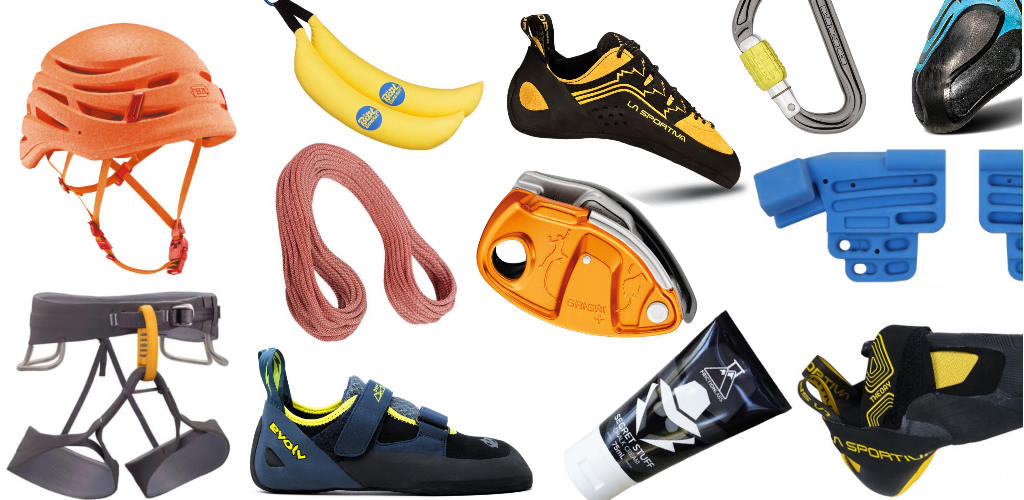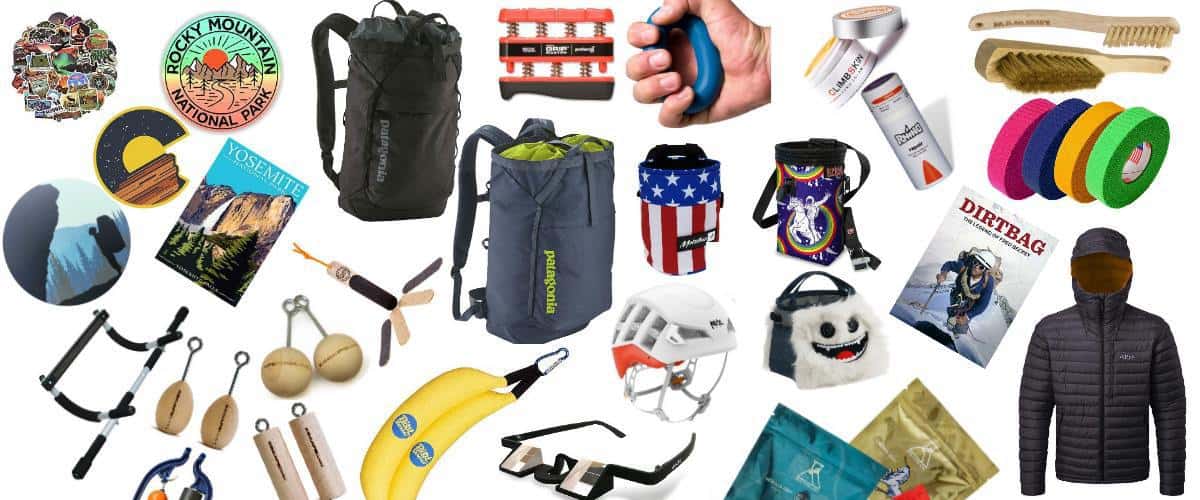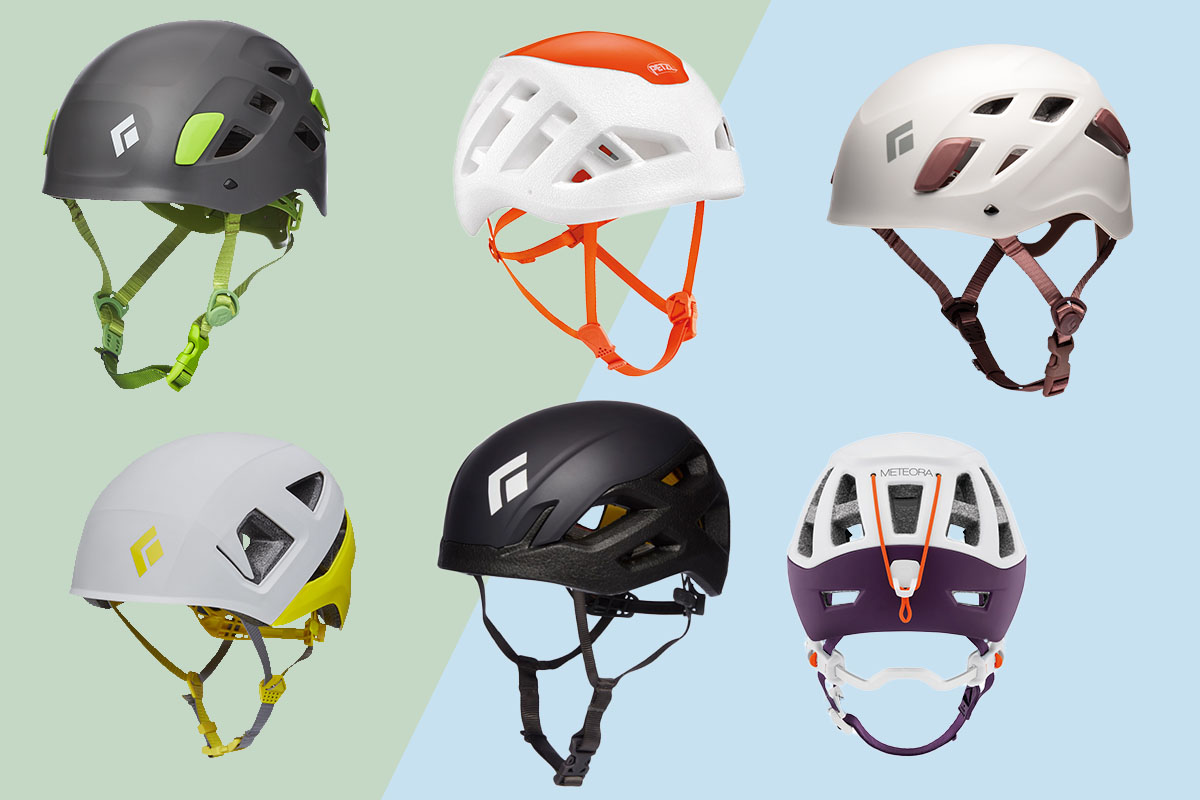The best static rope is probably the one you’ve never seen. There are many uses for static rope but in climbing they’re mainly for hauling gear up and down big walls. As a result they need to stand up well to abuse from the rigging pros.
What Is Static Rope?
Static rope is a type of rope designed to stretch as little as possible. It’s used mainly to get up and down a rope with specific devices called ascenders and descenders. While it’s sometimes called static climbing rope really it’s just static rope.
Static rope will stretch less than 5% and be made of stiff polyester strands, with a diameter (thickness) of 9 to 11 millimeters. They’re also very strong in order to carry a person as well as a large amount of gear.
What Is The Difference Between Static Rope and Dynamic Rope?
The big difference is that static rope is meant to stretch as little as possible, while dynamic rope is designed to stretch quite a lot. When people talk about climbing ropes they almost always mean a dynamic rope.
Typical dynamic climbing ropes stretch up to 10% with a person just hanging on the end. In a fall they can stretch up to 35% in a huge fall but typically around 15-25% in a small one.
This stretch is part of the design and helps to absorb the large forces created in a fall. This stops the climber and the protection they’re attached to taking that force. Without it climbing would be very dangerous and injury prone.
Other differences are that dynamic climbing ropes might be more wear resistant because of the need for constant pulling through quickdraws and chains. Static ropes tend to last longer because they don’t rub up and down against sharp rock. Rope abrasion from sharp rock can destroy rope in seconds so the less stretch and bounce the better.
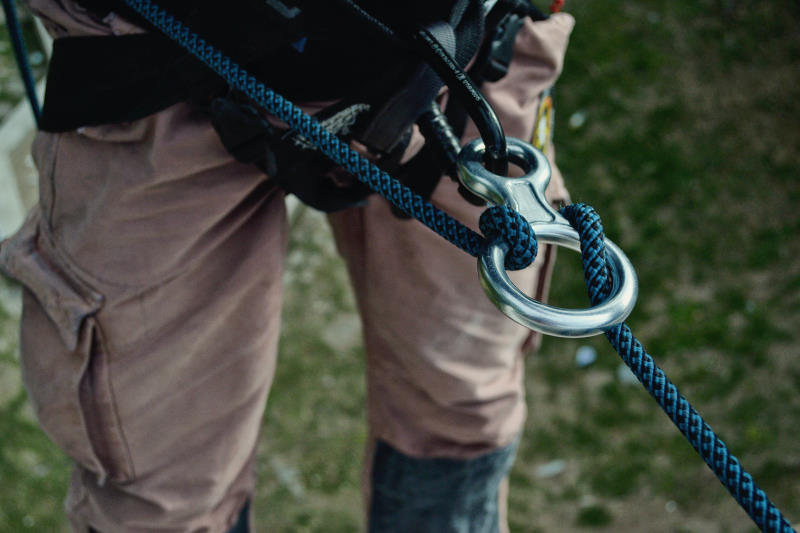
Static rope also isn’t rated or tested for falls as you are not meant to fall on them. They instead are just rated for breaking strength. This the peak amount of force in kilonewtons they can hold without breaking – though the real figure for both cases is often higher.
Static Rope Vs Dynamic Rope
| Dynamic Rope | Static Rope | |
| Used for: | Rock + Ice Climbing, Mountaineering | Rappelling, Canyoneering, Rope Access |
| Rated for: | Maximum fall impact force | Peak breaking strength |
| Static Stretch: | Up to 10% (12% in half ropes) | Up to 5%, typically less |
| Dynamic Stretch: | Up to 40% | Not rated |
| Typical Diameter: | 8 to 10mm | 9 to 12mm |
Why Use Static Rope?
There are many reasons people use static rope, really all boiling down to any time you need a rope just for getting up and down without a fall. There are a bunch of different techniques and devices for this that all depend on rope diameter and use.
Some of the biggest uses of static rope are for: –
- Caving – Getting down into a cave and back out require a static rope for easy rappelling and ascending. Rope hanging over abrasive rock edges then rubbing up and down is very bad. Static rope cuts out a lot of friction.
- Canyoning + Caving – Very much the same uses as caving. Water resistant or dry static rope can definitely be helpful here.
- Rappelling / Abseiling – You might be rappelling for fun, military or fire fighting purposes, or to protest deforestation in the Amazon. Static rope makes these easier.
- Rope Access + Rigging – Climbing comms towers, setting up lighting and stage rigging, arborist work, and any work at height probably needs a static or semi-static rope.
- Climbing Photography – A dedicated static rope is the secret ingredient to climbing photography. Having a rope that won’t stretch makes getting up and down much easier and faster. You can also worry less about rope rubbing on rock edges.
- Fixed Lines on Big Walls – Setting up fixed ropes is a big thing in the world of big walls. In Yosemite a lot of the more famous routes have year round fixed ropes almost the entire length of the face. They’re mostly used for hauling up gear and water stashing before a clean ascent as well as cleaning once done. Many will also use them in conjunction with a micro traxion to practice hard sections alone – as seen in Free Solo and Dawn Wall. Leaving fixed lines on big walls for any amount of time is bad etiquette but common.
- Route Setting – The setters at your local wall use static rope to get up and down whilst taking off and cleaning holds and for setting new routes.
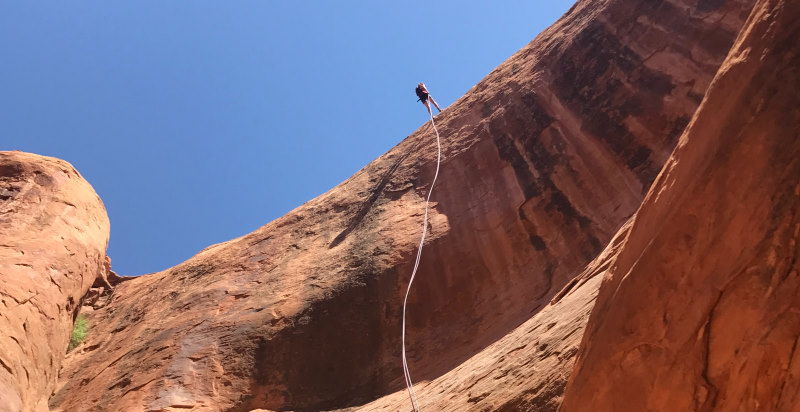
Can You Climb On Static Rope?
No – do not rock climbing using static rope. A dynamic rope stretches in order to absorb the force of a fall. Taking a fairly standard lead fall on a static rope puts all of that force into your body and the gear. Expect injury and possible gear failure if you use static rope to climb.
The only time you might climb on a static rope is if you are rope soloing – though normally using a semi-static rope. In that case the climber has either a micro traxion, shunt or grigri set up so that they fall immediately back onto the rope without any slack in system. Rope soloing is complicated and very dangerous. It shouldn’t be done without a lot of experience.
Can I Rappel On A Dynamic Rope?
Yes, you can rappel with a dynamic rope without any real issue. Very long rappels away from a wall – i.e. an overhanging sea cliff. rope can cause you to start spinning as you go down. That’s because ropes are often twisted from grigri use or normal coiling. The rope starts to untwist as your weight gets lower.
Otherwise you’re fine for the occasional rappel or even a little canyoneering. If you plan to go up the rope by jugging then static rope is much easier. It’s steadier with less bounce won’t add length by stretching.
Regular rappelling does wear ropes and push dirt into them. Static rope is much cheaper so if you rappel a lot buying a separate rap rope will save you money long-term. Expensive dynamic ropes should be treated really well to get good use from them.
Can I Use Static Rope For Top Roping?
While people have used static rope for top roping we don’t recommend it. It requires a lot of attention from belayer so there is never slack in the system. Even if totally tight there is still more force on the climber and gear in a fall. This applies even more to heavier climbers.
If you really are going to only use a rope for top roping and don’t want a very stretchy rope, go for either a semi-static rope or a dynamic rope with the lowest stretch you can find. Gyms often use top ropes that stretch much less than a standard dynamic but more than a static – around 10 to 20%. It helps to stop ground falls on short routes.
The main reason people might prefer a static rope for top roping is they tend to be cheaper and more robust than dynamic rope. Don’t be tempted by price over safety though. Instead maybe use an older lead rope that’s still in safe condition but has lost it’s stretch.
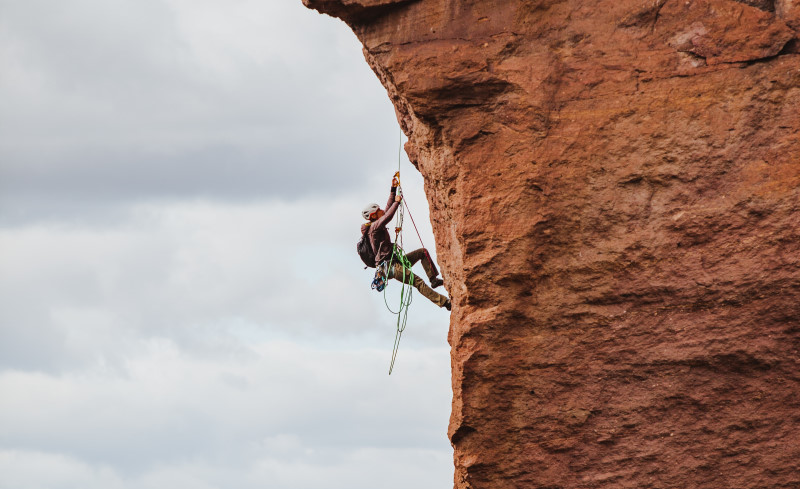
What Is Semi-Static Rope?
This is a much less stretchier rope than a dynamic line but more than a static. Semi-static or low stretch rope typically stretches 5-10% when under load. For short rappels and canyoneering this gives a little bounce and won’t stretch too much that it will cause any issue.
It can be used for setting up top rope anchors. Specifically to extend the anchor to stop rope rub. For example there are no bolted anchors on a climb but some hefty trees a few meters back from the top. You can use semi-static rope to anchor all the way back to the trees.
The rope then loops back to some locking carabiners running past the lip of the route. You don’t climb on the rope, just attach anchors for threading a climbing rope through. It’s slightly safer and easier to use than webbing but a little bulkier and heavier.
For when you need a lot of rope – like on a big wall – having a less stretchy rope is generally better. A 200 meter rope that stretches 5% means an extra 10m overall. If you tried that on a dynamic rope with 30% stretch that another 50 meters work jugging plus bounce and more rope spin.
What Are Static Ropes Made From?
In general static ropes use nylon fiber strands – like dynamic ropes. You might find some that use polyester which is stronger but less supple. Sometimes manufacturers use specially made blends under a different name but they’re generally some form of either nylon or polyester.
Like dynamic ropes there is an inner core which has a few thick strands, held together and protected by the outer sheath. The core gives most of the holding strength with the sheath mainly serving to protect from sharp edges, abrasion, and weather/dirt.
How To Tell If A Rope Is Static Or Dynamic?
The ratings for static ropes normally come under the “low stretch kernmantle rope” standards set out in EN 1891. This means you should see a “CE EN 1801” marking on the plastic marker on the rope when you first buy it.
You may also see a UIAA 107 marking for “low stretch ropes“. This is another safety standard by the UIAA that is similar to the CE one. For dynamic ropes the markings will be “CE EN 892” and/or UIAA 101. Riveting stuff.
Should I Soak My Static Rope?
You don’t have to soak a static rope before use. Many years ago manufacturers recommended this before use to shrink the outer to the core. Since then manufacturing processes have improved greatly.
You should not do this unless specifically instructed in the care manual that comes with the rope. You don’t do it for dynamic ropes either.
Best Static Climbing Ropes
These are our top picks for the best static ropes for each use. Bear in mind that most of them do a similar job of just not stretching much. We’ve given our recommendations and alternatives for most too.
If you expect to be in wet or frozen conditions then we strongly suggest getting a dry treated or water resistant static rope like the Sterling CanyonLux. Dry treatment costs more but a wet rope loses strength and gets heavier. Dry treatment generally also means better resistance to dirt getting into the core plus a little more wear resistance.
Best Static Climbing Rope For Big Walls
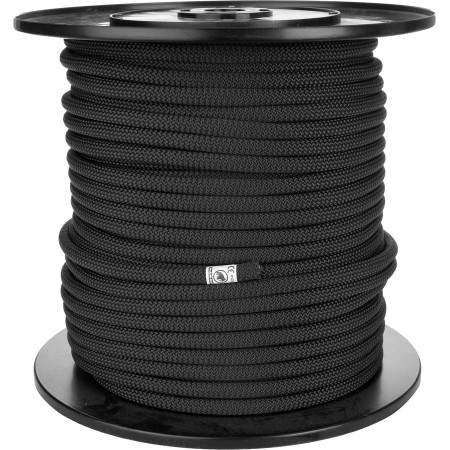
Mammut Performance Static Rope
| Weight Per Meter: 10mm: 66g / 10.5mm: 72g | Breaking Strength: 10mm: 27kN / 10.5mm: 31kN | Static Elongation: Both < 5% |
Most of the ropes you’ll see rigged in place on El Cap will be these. Both come in a variety of lengths up to 300m if needed. Their main draw is a good abrasion resistance and a decent price per meter. The thinner 10mm vs the 10.5mm will save a significant amount of weight if you plan to move it about a lot.
This is also our pick for the best static rope for climbing photography. If the pros use and abuse this for weeks shooting on El Cap then you can trust it for shooting your buddy’s first 5.12. As a general rappelling and jugging rope this is king.
The black might stand out less and blend in with shadows vs the white/red. This does depend on the rock type and conditions. The 10.5mm also comes in a red/black to stand out. Comes with a two year manufacturer’s warranty. Also available in 11mm.
Best Static Rope For Rappelling
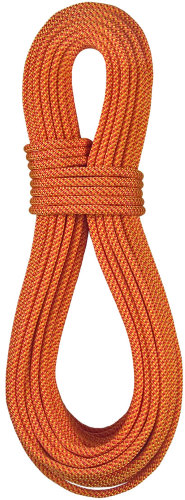
| Weight Per Meter: 62g | Breaking Strength: 22.2kN | Diameter: 9mm | Static Elongation: 3.5% |
The Canyonator is an excellent all-rounder at a great price. Designed in collaboration with Rich Carlson, founder of the American Canyoneering Association with over 30 years in canyoneering and rappelling experience. The best rappelling rope for most lowering needs.
Comes in a slim 9mm that will save you weight. 65m and 100m in bright green or orange. Has a strong and stiff 100% polyester sheath and core that will last years of long rappels. Consider the other ropes if you need something more flexible for knots or twists. This is purely a rappelling rope.
Best Static Rope For Canyoneering
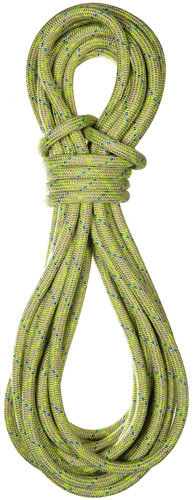
Sterling CanyonLux Canyoneering Rope
| Weight Per Meter: 62g | Breaking Strength: 22.2kN | Diameter: 9mm | Static Elongation: 3.3% |
The best canyoneering rope hands down. At just 8mm it’s super light and easy to handle, perfect for long approaches and “interesting” route finding. It comes in a range of lengths from 100 to 300ft and in a couple of nice colors.
The big plus on this is the Technora sheath which has a high resistance to abrasion and water. This rope is on the higher end of the cost table but will last and perform for a long time. Made in America and comes with a lifetime warranty.
Other Options: The BlueWater Canyonator is a cheaper choice but still a great option.
Best Semi-static Rope For Top-Rope Anchors
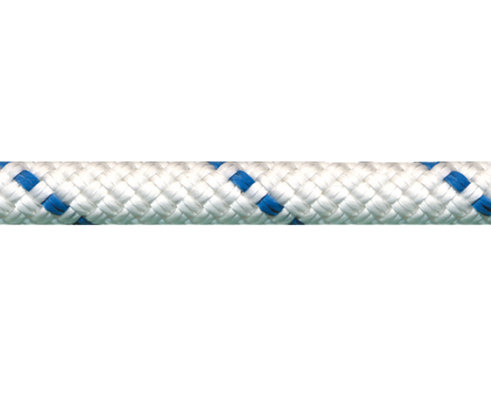
Beal Spelenium 10.5mm Low Stretch Rope
| Weight Per Meter: | Breaking Strength: 19kN | Diameter: 9mm | Static Elongation: 3.5% |
If you just need a little semi-static rope for setting up top rope anchors you don’t have to worry too much about length, diameter, or water resistance. The rope should be decently good at resisting wear but you should also expect to check it regularly and replace when needed.
For the price this low stretch rope will do you well. Designed for cavers but perfectly suited to rigging anchors for climbing too as it’s supple enough to get knots in. Also available in a few different thicknesses and lengths from 9 to 10.5mm. Probably the best static rope for anchors at the price point.
You can also chop it into a few different lengths based on what you need and where you’ll climb, saving weight and approach effort. Make sure you seal the ends correctly. Remember this is for making anchors not for climbing directly on.
More Climbing Rope Articles
– Best Climbing Rope
– Best Beginner Climbing Rope
Handy To Have – Best Static Climbing Rope Extras
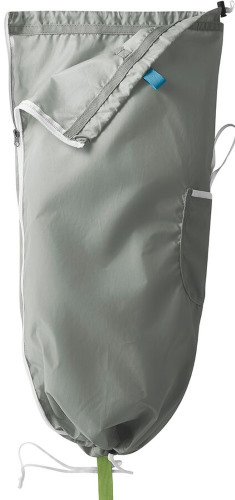
If you’ll be hauling around bunch of rope and want to get the longest life from it then consider a decent rope bag.
The Edelrid Tillit is designed for filling and unfilling while on big walls and aims to save a lot of time. It has a long side zipper, with a cinch close at the top and bottom to easily switch sides once you’ve finished belaying or hauling. It can also be attached to the anchor point. You might also use to hide or manage rope when doing photography.
If you need something a bit bigger and more basic consider the Black Diamond rope bucket which does what it says on the tin. If you have of rope and gear to haul or stash go for the classic Metolius range of reinforced haul bags.
A rope marker can help for marking how much rope you’ve used/have left but it will only show on light ropes. Using a specific rope marker is recommended because the chemicals are tested on ropes so they don’t break down the nylon fibers. Some normal marker pens can damage rope.
